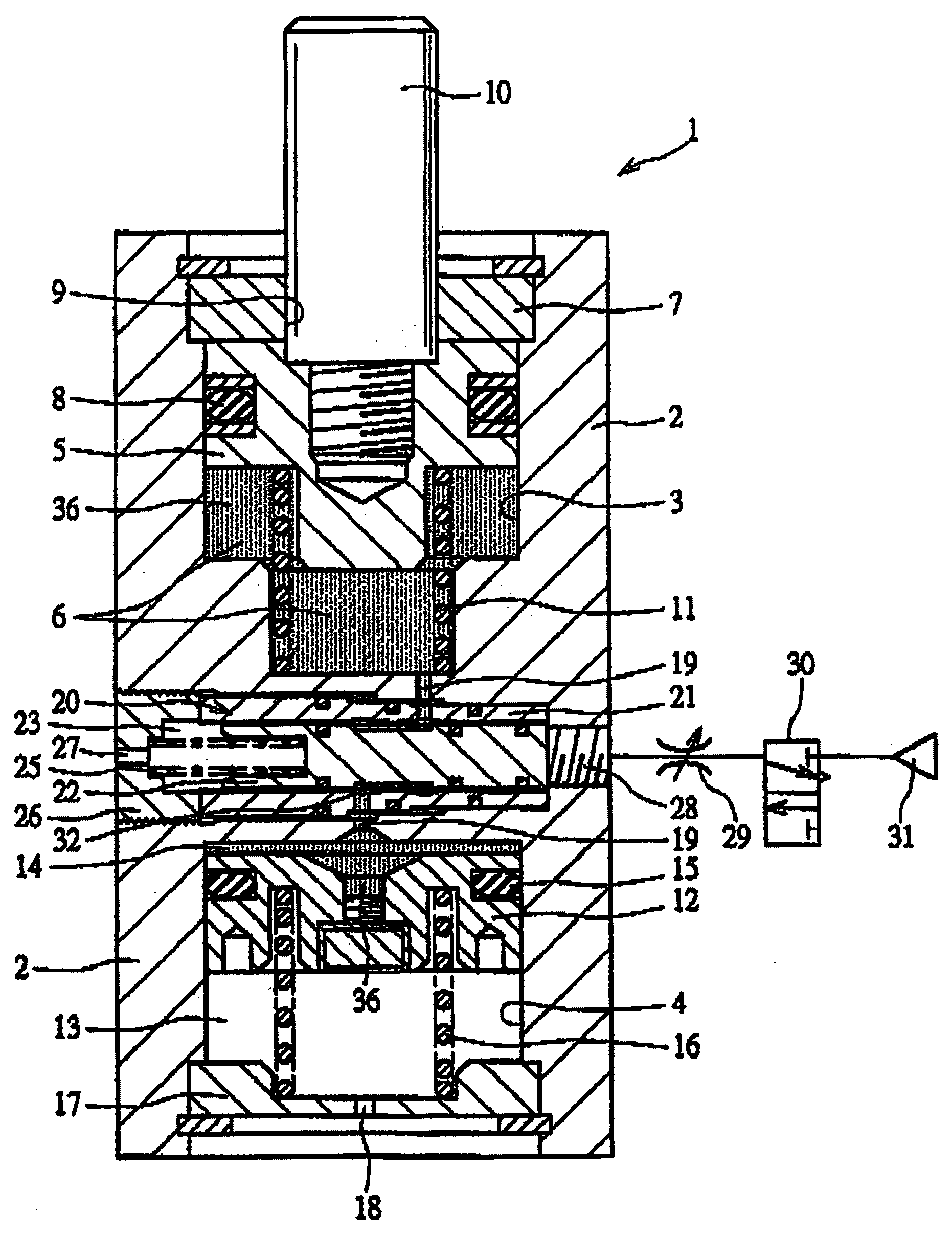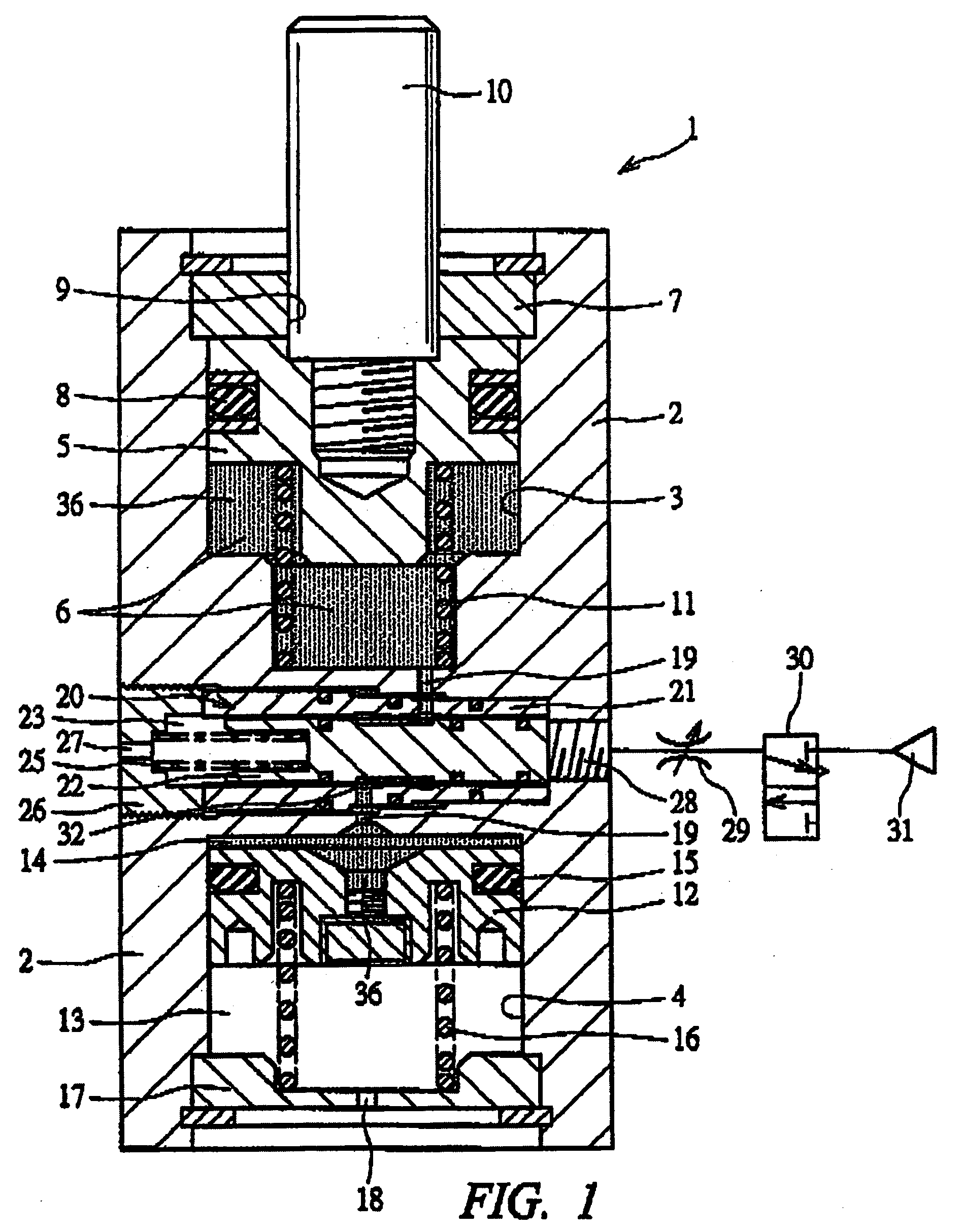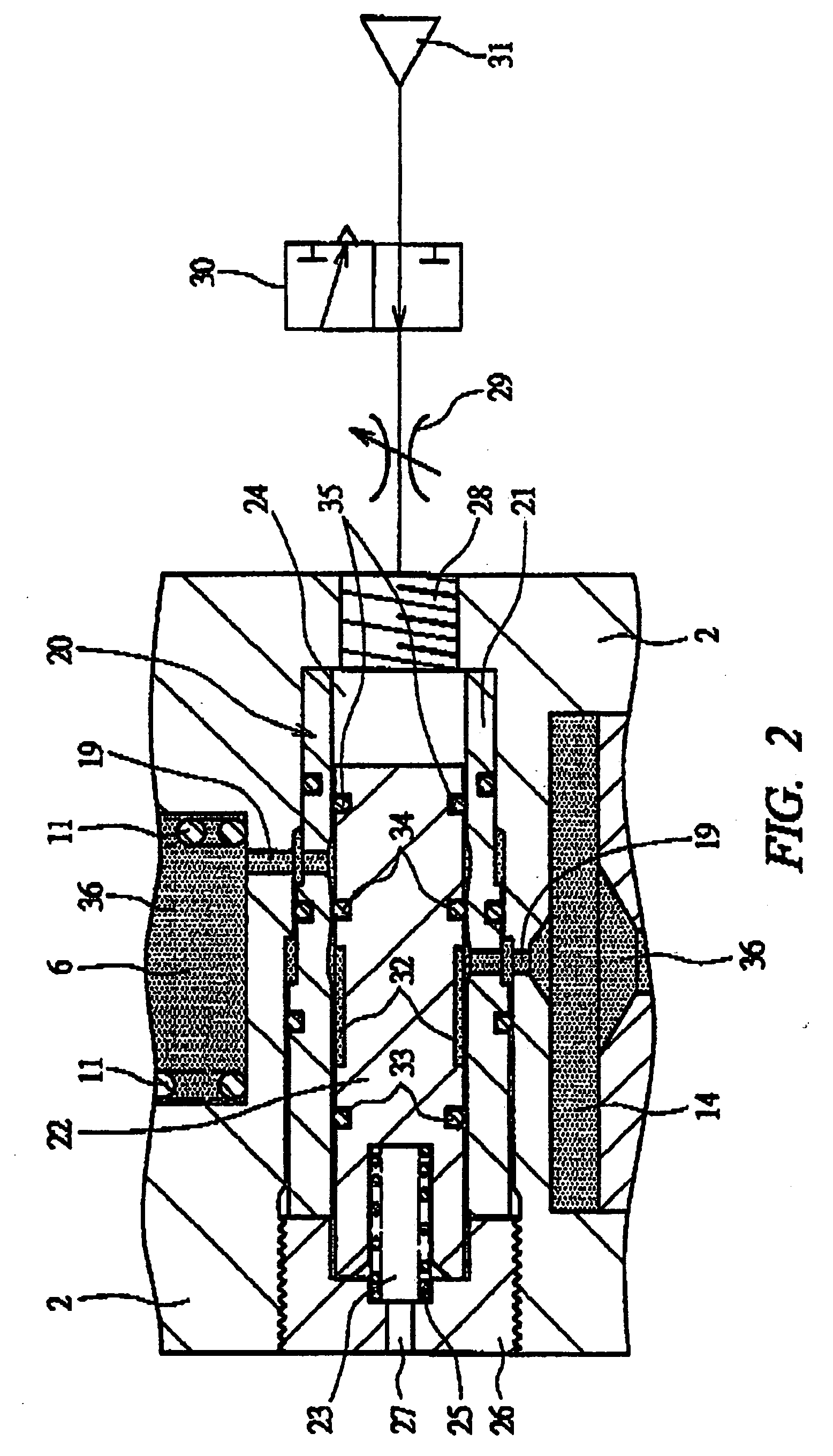Workpiece support device
- Summary
- Abstract
- Description
- Claims
- Application Information
AI Technical Summary
Benefits of technology
Problems solved by technology
Method used
Image
Examples
Embodiment Construction
[0019]FIG. 1 is a sectional view showing a workpiece support device according to an embodiment of the present invention, and FIG. 2 is an enlarged view showing a state where a third piston shown in FIG. 1 has been moved at a closing position.
[0020] A workpiece support device 1 has a support stand 2 with a cubic shape, a first cylinder chamber 3 is partitioned and formed at an upper portion of the support stand 2, and a second cylinder chamber 4 is partitioned and formed at a lower portion of the support stand 2.
[0021] A first piston 5 is accommodated in the first cylinder chamber 3 so as to be reciprocable vertically, and a first medium chamber 6 serves as a lower end face side of the first piston 5. A bottom face of a cover member 7 fitted for partitioning and forming the first cylinder chamber 3 serves as a stopper face of the first piston 5 for reciprocation and, as shown in FIG. 1, a position where the first piston 5 abuts on the stopper face is set as an advance limit positio...
PUM
 Login to View More
Login to View More Abstract
Description
Claims
Application Information
 Login to View More
Login to View More - R&D
- Intellectual Property
- Life Sciences
- Materials
- Tech Scout
- Unparalleled Data Quality
- Higher Quality Content
- 60% Fewer Hallucinations
Browse by: Latest US Patents, China's latest patents, Technical Efficacy Thesaurus, Application Domain, Technology Topic, Popular Technical Reports.
© 2025 PatSnap. All rights reserved.Legal|Privacy policy|Modern Slavery Act Transparency Statement|Sitemap|About US| Contact US: help@patsnap.com



